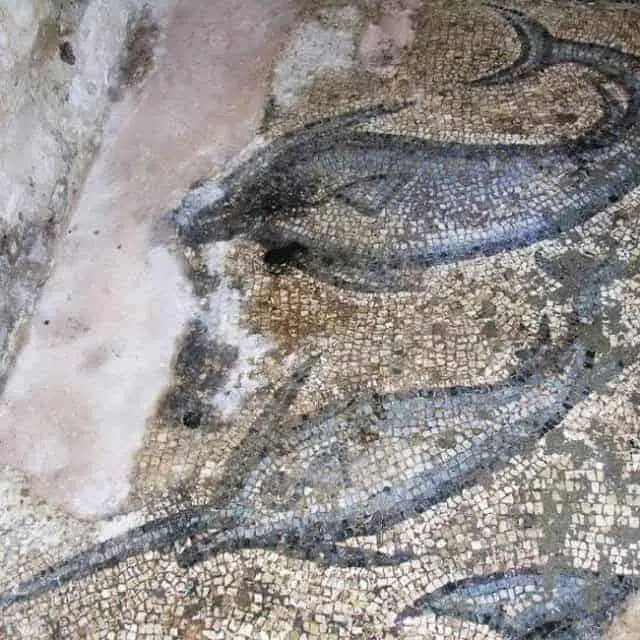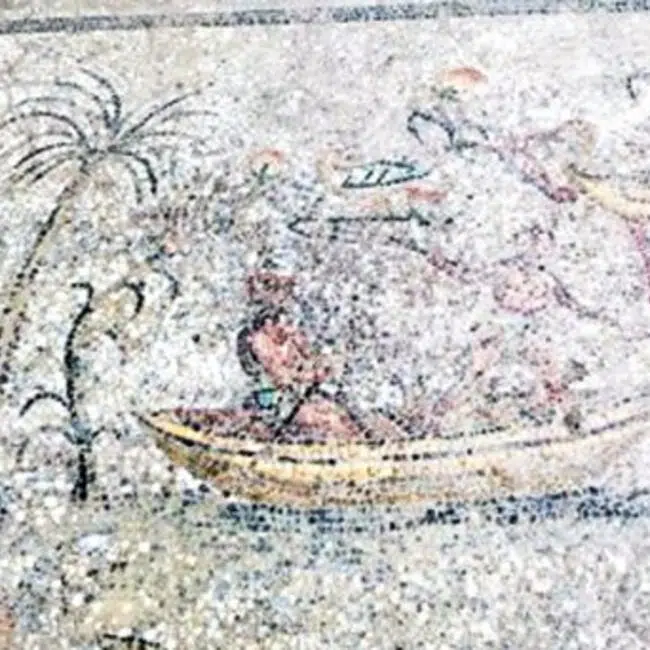
Phainos was the most famous fisherman of his time who lived in the 2nd century AD in the ancient Greek city of Halicarnassus.
His villa, adorned with astonishing mosaics depicting sea creatures, was accidentally discovered by property developers in 2018.
Phainos was considered the richest fisherman of the Roman period in Halicarnassus, located near the modern Turkish city of Bodrum.
The luxury villa of the ancient Greek fisherman
Moreover, ten tombs and human remains have also been discovered, as well as a Roman bath, marble work that was used in contemporary luxury residences, pottery, perfume bottles, and fishing equipment.

“The first findings of Phainos, the most famous fisherman of his time, were…discovered in the ancient city of Halicarnassus in [the] 1890s. More mosaics and villa ruins that had the marks of Phainos were later discovered during the excavations at the city center,” archaeologist Candan Temizel said.
He added that “Those findings which have been unearthed should be carefully protected. This invaluable world heritage should be shared.”

Halicarnassus was famous for the Mausoleum of Halicarnassus, also known simply as the Tomb of Mausolus, whose name provided the origin of the word “mausoleum.” The mausoleum, built between 353 and 350 BC, is ranked as one of the seven wonders of the ancient world.
Ancient Greeks were particularly fond of fresh fish
Ancient Greeks were gourmands and particularly fond of large, fresh fish and eel, according to research headed by zooarchaeologist Dr. Demetra Mylona.
The zooarchaeologist, who does research for the Institute of Aegean Prehistory Study Center for East Crete, is collecting data from written sources, scientific texts, and from the study of ancient remains of fish, such as bones.
“We can also learn a lot from ancient bones of fish brought to light by the archaeologist’s hoe and by the pots in which they were cooked, conducting chemical analysis of food residues,” Mylona told the Athens News Agency.
According to Mylona, the ancient Greeks had a special preference for Aegean fish living in rocks but also liked fish from the open seas, such as tuna, a sought-after fish. They also liked mackerel, bonito, and anchovy, which were abundant when in season and easy to catch with nets.
“Of course, we do not have the names for all fish found in ancient sources, except where details of the characteristics of the fish are given,” she explained to the Athens News Agency.
As for processed fish, such as preserved tuna and anchovies, they were widely consumed by all social classes and were the product of a very flourishing trade throughout the Mediterranean and the adjacent seas.
Mylona also pointed out that in antiquity and through the Middle Ages, garos was a basic element of the Mediterranean diet.
See all the latest news from Greece and the world at Greekreporter.com. Contact our newsroom to report an update or send your story, photos and videos. Follow GR on Google News and subscribe here to our daily email!



